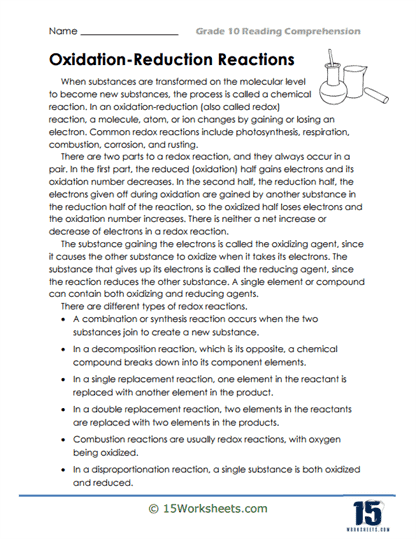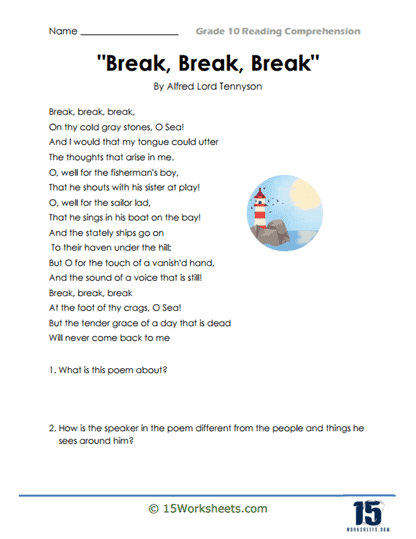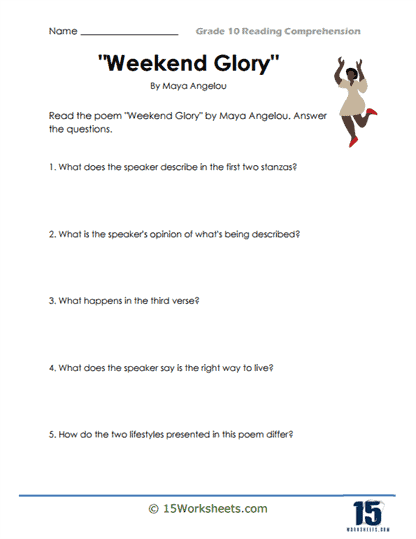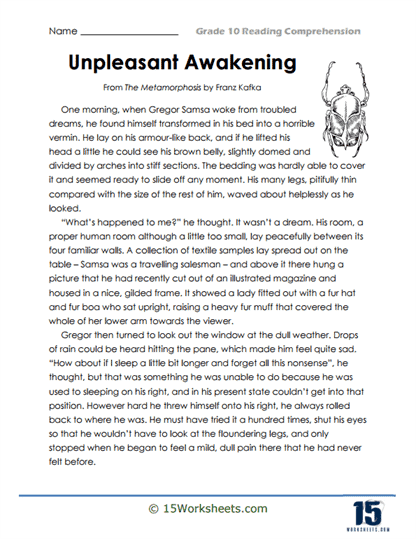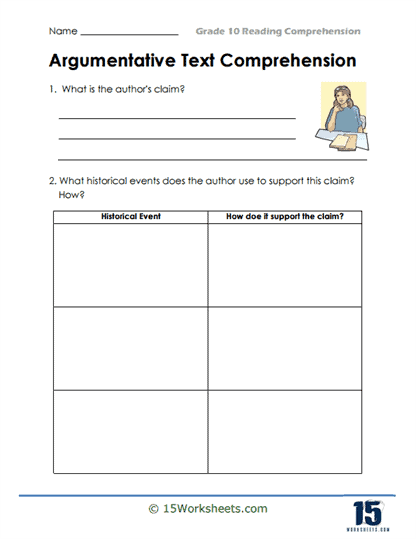Grade 10 Reading Comprehension Worksheets
All About These 15 Worksheets
Reading comprehension is the bedrock of academic success and lifelong learning. For students in the 10th grade, mastering this skill is not just essential; it’s a gateway to understanding complex texts, developing critical thinking, and expanding their knowledge base.
A grade 10 student should be able to read and comprehend complex texts from various genres, both fiction and non-fiction. They should have a strong vocabulary, allowing them to understand and interpret nuanced words and phrases. In the 10th grade analytical skills are essential, enabling them to identify themes, motifs, and symbolism within literature. Students should be able to recognize an author’s purpose, tone, and perspective and critically evaluate the credibility and reliability of sources. Additionally, they should be adept at drawing inferences and making connections between different texts or concepts. Lastly, they should be capable of summarizing, paraphrasing, and citing text to support their arguments and perspectives in discussions or written assignments.
This collection of 15 worksheets is meticulously designed to help students in the 10th grade (high school sophomore’s) hone their reading comprehension skills. By providing them with the tools to navigate and understand diverse texts, this collection empowers students to excel academically and become lifelong readers.
What are Grade 10 Reading Comprehension Worksheets?
These Grade 10 Reading Comprehension Worksheets were created to help 10th grade students practice and improve their reading comprehension skills. These worksheets typically include longer and more complex passages of text followed by a series of questions that assess the reader’s understanding of the material.
Grade 10 Reading Comprehension Worksheets can help students develop skills such as:
Analyzing Literary Elements – By analyzing literary elements such as character, setting, plot, and theme, students can develop their ability to recognize and understand these elements in a wide range of texts.
Understanding Main Ideas and Supporting Details – By answering questions about the main ideas and supporting details in a passage of text, students can learn to identify and summarize the key points of what they have read.
Making Inferences and Drawing Conclusions – By answering questions that require them to infer or draw conclusions based on the information presented in a passage, students can develop critical thinking skills and learn to analyze and interpret text.
Understanding Complex Vocabulary – By encountering advanced vocabulary words and phrases in context, students can improve their vocabulary and become more confident in their ability to read and understand complex texts.
Practice with Test-taking Strategies – Many Grade 10 Reading Comprehension Worksheets are modeled after standardized tests, so working with these worksheets can help students develop test-taking strategies such as time management, careful reading, and careful answering.
There are several ways in which 10th grade students can improve their reading comprehension skills:
Read Extensively – One of the best ways to improve reading comprehension is by reading extensively. Students should aim to read a variety of texts, including fiction and non-fiction, to improve their understanding of different writing styles and genres.
Read Actively – To improve comprehension, students should read actively, which means engaging with the text by underlining key words or phrases, writing notes in the margins, and summarizing main ideas.
Build Vocabulary – Building a strong vocabulary can help students better understand the texts they read. Students can learn new words by reading widely, using vocabulary apps or websites, and reviewing vocabulary lists.
Practice Summarizing and Synthesizing – Students can improve their comprehension by practicing summarizing and synthesizing information from the texts they read. Summarizing involves identifying and restating the main ideas of a text, while synthesizing involves combining information from multiple texts to form a new understanding.
Practice Making Inferences – Making inferences involves drawing conclusions based on the information presented in a text. Students can practice making inferences by asking themselves questions about the text and using clues from the text to answer them.
Practice Analyzing Literary Elements – Understanding literary elements such as character, setting, plot, and theme can help students better understand the texts they read. Students can practice analyzing literary elements by discussing them in class, writing about them in essays, or completing worksheets or other exercises.
Seek Help from a Tutor or Teacher – If students are struggling with reading comprehension, they can seek help from a tutor or teacher. A tutor or teacher can provide personalized instruction and feedback to help students improve their skills.
Overall, this is more than just a collection of worksheets; it’s a comprehensive guide that empowers 10th-grade students to navigate and understand the complex texts they encounter in their academic journey and beyond.
By fostering critical thinking, vocabulary expansion, and effective communication, this collection equips students with the skills they need to succeed in their studies and thrive in an information-driven world.
These worksheets underscore the enduring importance of reading comprehension as a foundation for lifelong learning and success, making it an indispensable resource for both educators and students.










